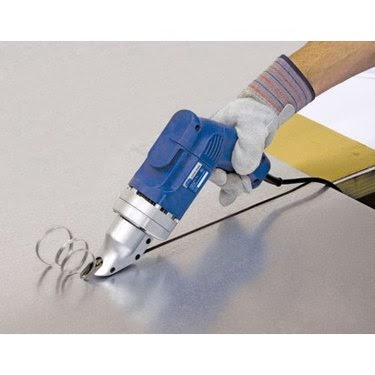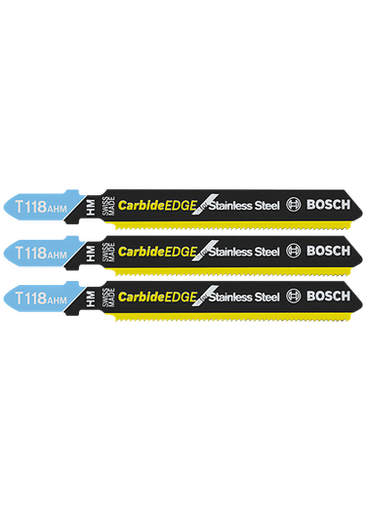Quck answer
To cut stainless steel, follow these steps:
1. Choose the right tool: Use a circular saw, angle grinder, or plasma cutter with a stainless steel cutting blade or disc.
2. Prepare the work area: Clear the space and secure the stainless steel sheet or object firmly in place.
3. Mark the cutting line: Use a marker or scribe to draw the cutting line on the stainless steel surface.
4. Put on safety gear: Wear safety goggles, gloves, and a face mask to protect yourself from sparks and debris.
5. Cut along the marked line: Start cutting slowly and steadily, applying light pressure. Let the tool do the work and avoid forcing it.
6. Cool the stainless steel: If the metal gets too hot during cutting, use a coolant or water to prevent damage and maintain the cutting quality.
7. Remove burrs and sharp edges: Use a file or sandpaper to smooth out any rough edges left after cutting.
Remember to always prioritize safety when working with power tools and wear appropriate protective gear.
Stainless steel is often considered a remarkable material. It is stronger and more durable than many other metals used in construction, and it has a high resistance to corrosion and stains. It can even be used as a finish material without any additional treatments.

Stainless steel can be cut, even by those without much experience.
Image Credit:
CherriesJD/iStock/GettyImages
Stainless steel is available in various forms, including sheets, tubing, rods, and bars. The most common form found in homes is sheet steel, which is used for countertops, backsplashes, and appliance facings. While bars and thicker forms of stainless steel are typically cut with a plasma cutter, homeowners can use several power tools to cut sheets and other thin materials, such as shears, saws, grinders, or rotary tools.
What Is Stainless Steel?
Stainless steel is an iron alloy that contains a mixture of metals, including carbon, manganese, silicon, nickel, molybdenum, and chromium. The chromium component is vital as it forms a “passive layer” that gives the alloy its corrosion resistance. All stainless steel contains at least 10.5 percent chromium. When cutting stainless steel, it is important to remember that it is a ferrous metal, meaning it contains iron. Ferrous metals tend to be harder and more difficult to cut compared to nonferrous metals like aluminum and copper. When purchasing blades or discs for cutting or grinding stainless steel, make sure they are specified for ferrous metals and specifically for stainless steel.
Tool Options for Cutting Stainless Steel
The best tool for cutting stainless steel depends on the material being cut. For thin sheet materials up to approximately 18-gauge in thickness (lower gauge means thicker metal), electric shears are the ideal shop tool. These shears have strong jaws that nibble through the metal, cutting out a 1/4-inch-wide strip and leaving a clean edge. They can also cut curves. However, shears are not suitable for making interior cuts, such as sink cutouts, as they have to start at an edge. To solve this issue, a hole can be cut (usually with a hole saw) large enough to allow the shears to get a good grip on the material.

Electric metal-cutting shears are the best option for cutting stainless steel sheets.
Image Credit:
Eastwood
For long cuts on sheet steel, the next best tool is a circular saw with an abrasive blade designed for stainless steel. This method produces sparks but results in a relatively clean cut, especially when using a straightedge as a guide. Circular saws cannot cut curves, so a jigsaw or grinder must be used for curved corners.
A jigsaw with a carbide blade suitable for stainless steel can cut steel sheets up to approximately 5/64 inch thick. Jigsaws are effective for long straight cuts when used with a straightedge guide, but they are particularly useful for tight curves and interior cutouts.

Choose jigsaw blades specifically designed for cutting stainless steel.
Image Credit:
Bosch Tools
Small cuts in sheet steel or slightly thicker materials like stainless steel tiles may be easiest to make with a grinder or rotary tool. Use an abrasive cutting wheel made for stainless steel. Conventional abrasive wheels can overheat stainless steel more easily and are not as efficient for cutting.
Be cautious of excessive heat
Just like any other metal, cutting stainless steel can cause changes in its atomic composition, affecting its appearance and performance. Welders need to be extra careful when working with stainless steel to avoid overheating and problems caused by contaminants. Overheating can also occur when cutting or grinding stainless steel with handheld power tools. In most cases, the worst damage that can happen is some staining or bluing of the metal, which can usually be removed by grinding or polishing. However, discoloration can indicate that the metal is no longer corrosion-resistant due to excessive heat causing metallurgical changes.
The key is to prevent overheating by using blades or discs specifically designed for stainless steel. These tools may be thinner or optimized to reduce heat during cuts. It is also important to keep the tool moving and not overwork the metal. For thinner sheet metal, shears are a good option as they slice the metal and generate very little heat.

Grinding disc for stainless steel.
Image Credit:
CGW
Warning
When cutting or grinding stainless steel, always wear full protective gear, including heavy gloves, ear protection, and safety goggles (not glasses) or a full face shield if possible.
Cutting stainless steel sheet with a saw
The techniques for cutting stainless steel with a circular saw and a jigsaw are similar. If the cut is an interior cutout, a circular saw can start the process with a plunge cut, while a jigsaw requires a starter hole that can be drilled using a drill bit or hole saw designed for metal.
- Place the sheet facedown on your work surface.
- Mark the cutting line on the backside of the sheet using a marker.
- Secure a straightedge guide (such as a level, board, or straightedge) over the stainless steel sheet, positioning it so that the saw blade will be on the cutting line when it is against the straightedge.
- Make the cut with steady but moderate pressure on the saw, allowing the blade to do the work. Avoid forcing the saw, as it can dull the blade and overheat the metal. Keep the base of the saw against the straightedge throughout the cut.
- If desired, clean up the cut edge using a grinder and flap wheel designed for stainless steel to remove any burrs. Alternatively, a metal file or 80-grit sandpaper and a sanding block can be used.
Cutting stainless steel with a grinder
A grinder can be used to cut various stainless steel materials, including sheets, tiles, and thicker stock. It may create a rough edge, especially on sheet steel, but this can be easily ground off using a flap wheel designed for stainless steel. A rotary tool like a Dremel can also make small cuts in stainless steel using similar techniques.
1. Use a marker to mark the cutting line on the top side or face of the material.
2. Apply a line of blue painter’s tape on the good side of the cutting line, ensuring that the edge of the tape follows the line. This step is optional but recommended for better visibility during the cut.
3. Secure the material by clamping or using any other appropriate method.
4. Cut the material with the grinder wheel, making sure that the wheel cuts down into the steel from the face side. This will ensure that the burrs from the cut are on the backside of the material.
5. Replace the grinder cutting wheel with a flap wheel and remove the burrs along the cut edges on the backside of the material.

Grinder flap wheel.
Image Credit:
Norton/Home Depot


